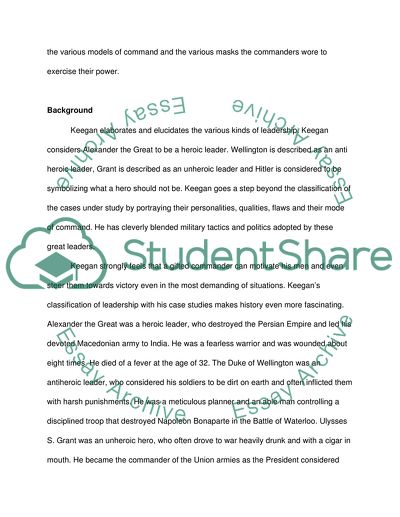Cite this document
(The Mask of Command Book Report/Review Example | Topics and Well Written Essays - 3000 words, n.d.)
The Mask of Command Book Report/Review Example | Topics and Well Written Essays - 3000 words. Retrieved from https://studentshare.org/history/1729736-the-mask-of-command
The Mask of Command Book Report/Review Example | Topics and Well Written Essays - 3000 words. Retrieved from https://studentshare.org/history/1729736-the-mask-of-command
(The Mask of Command Book Report/Review Example | Topics and Well Written Essays - 3000 Words)
The Mask of Command Book Report/Review Example | Topics and Well Written Essays - 3000 Words. https://studentshare.org/history/1729736-the-mask-of-command.
The Mask of Command Book Report/Review Example | Topics and Well Written Essays - 3000 Words. https://studentshare.org/history/1729736-the-mask-of-command.
“The Mask of Command Book Report/Review Example | Topics and Well Written Essays - 3000 Words”, n.d. https://studentshare.org/history/1729736-the-mask-of-command.


